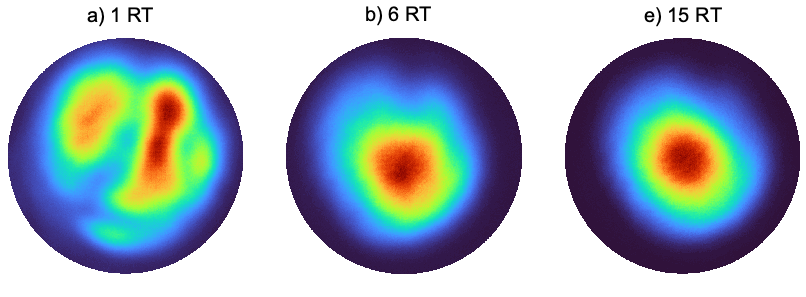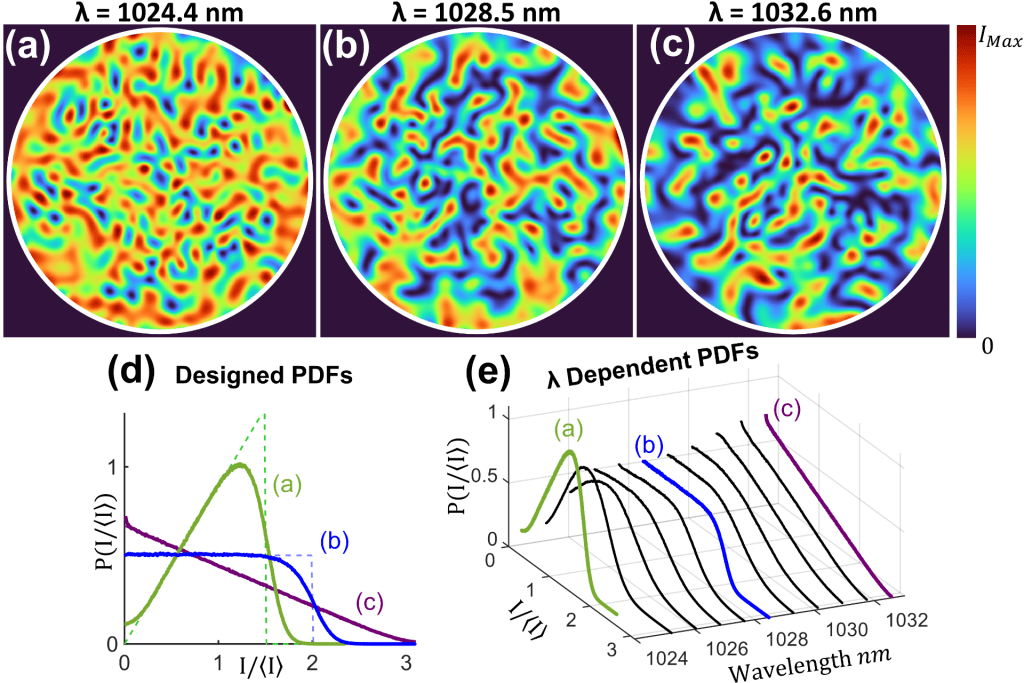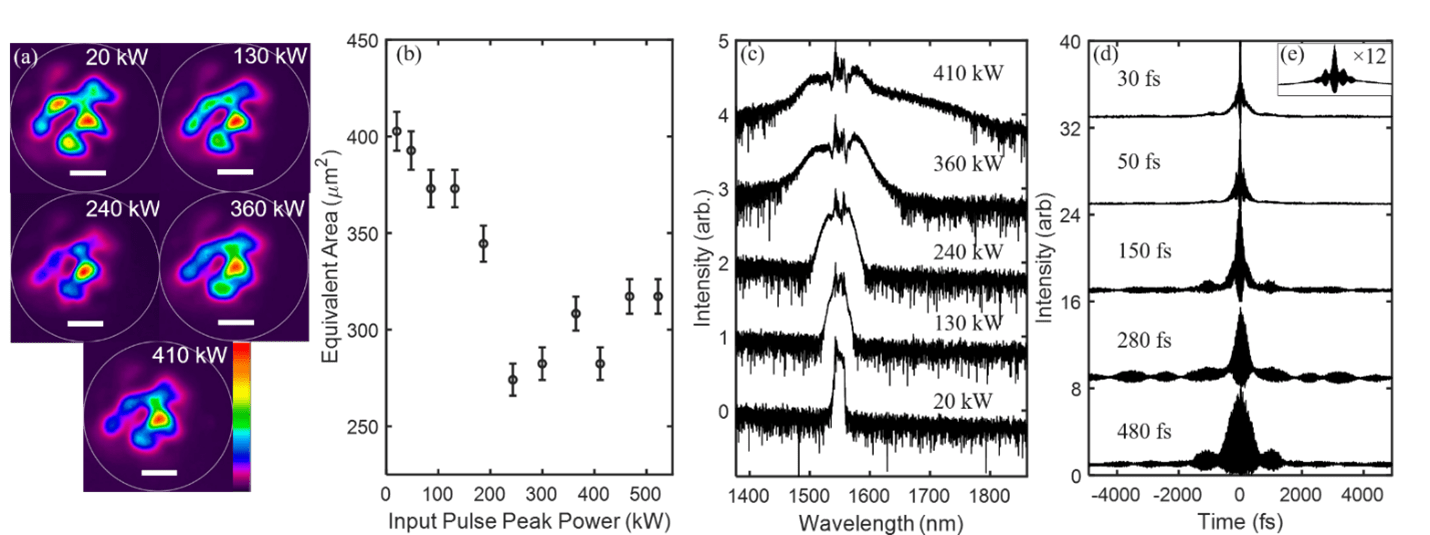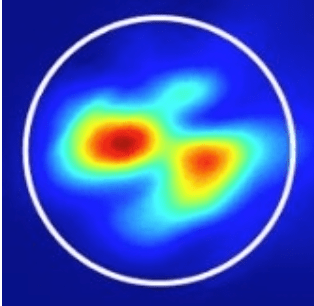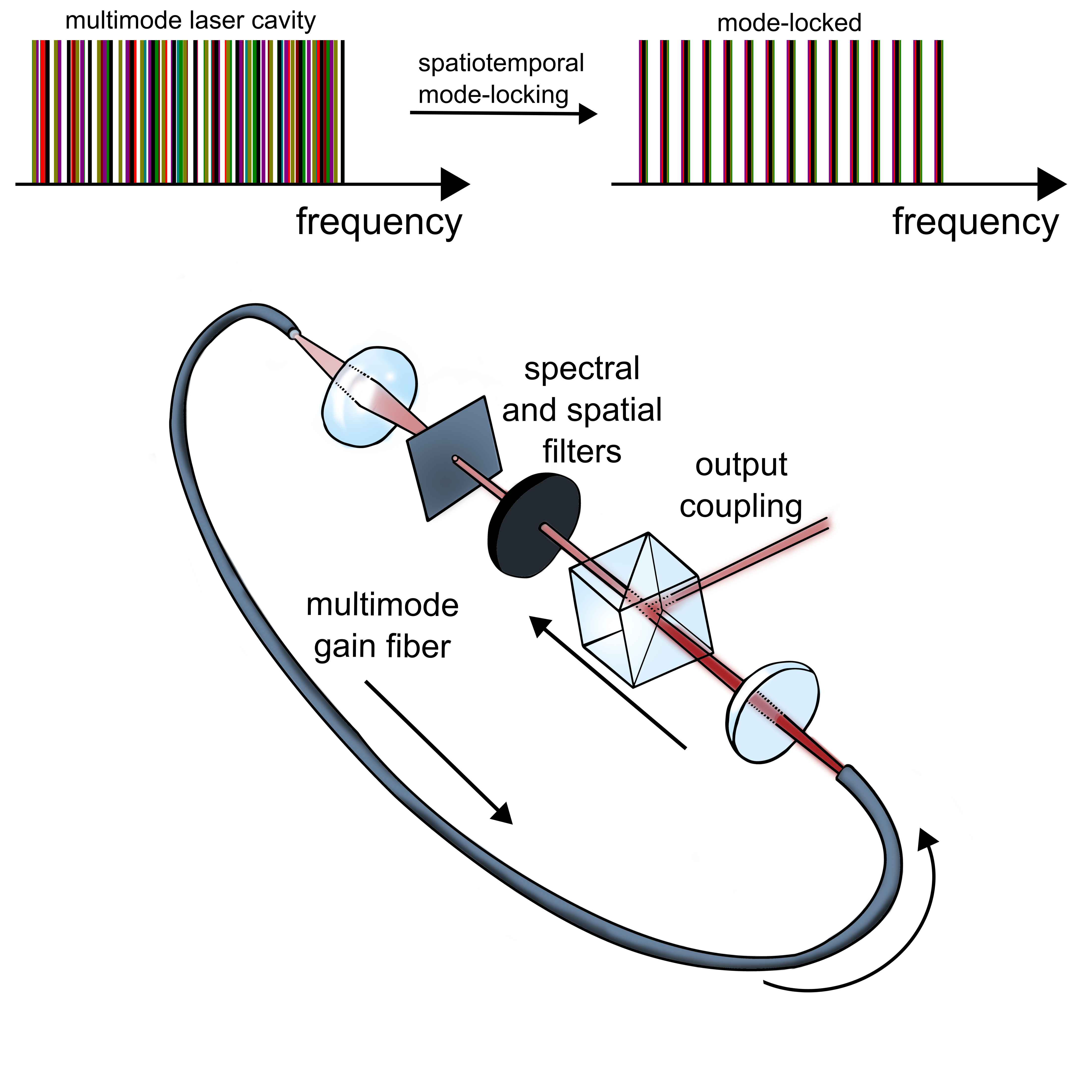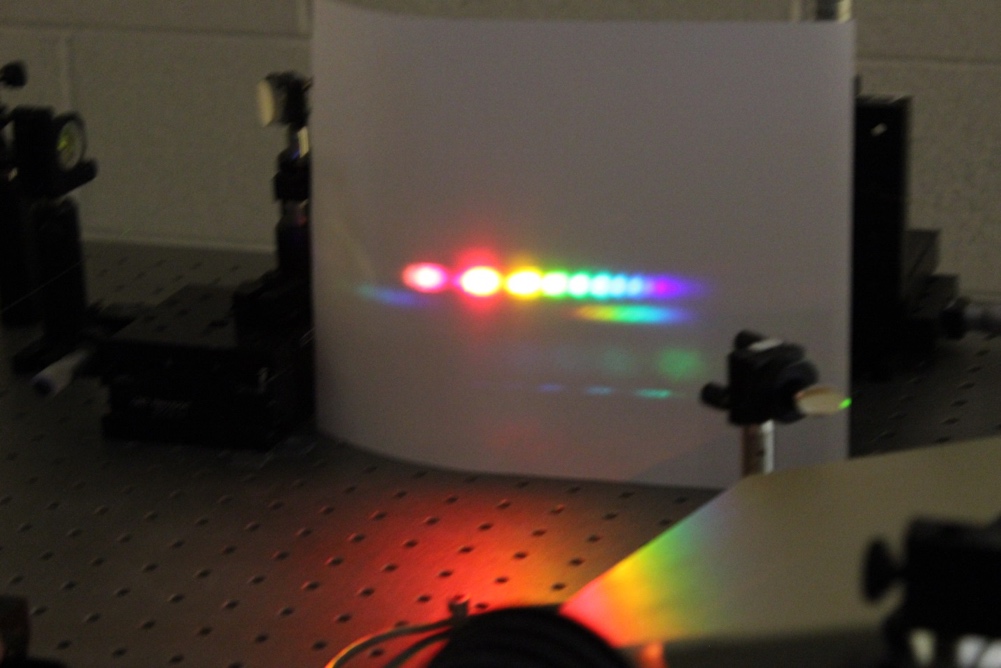Single-mode regenerative amplification in multimode fiber
The peak power performance of ultrafast fiber lasers scales with fiber mode area, but large fibers host multiple modes that are difficult to control. We demonstrate a technique for single-mode operation of highly multimode fiber based on regenerative amplification. This results in a short-pulse fiber source with, to our knowledge, an unprecedented combination of features: high gain (>55 dB) with negligible amplified spontaneous emission, high pulse energy (>50 µJ), good beam quality (𝑀2≤1.3), and transform-limited (300 fs) pulses from a single amplification stage. We discuss peak intensity scaling to much higher levels and other opportunities for short-pulse generation in regenerative fiber amplifiers.
